
Gravitational Attraction
What would happen if two people out in space a few meters apart, abandoned by their spacecraft, decided to wait until gravity pulled them together? My initial thought was that …
In #science

As an exercise, I like to reproduce computational papers, but with my own tools. This let's me know that I understand completely what is being written and in many cases allows me to extend and debug my own tools. I'm going to do a series of these as I work through some of my reading list. The first one I'm doing is available here:
https://www.cs.princeton.edu/picasso/mats/matlab/princeton_spring06.pdf
In this case, not only was I able to reproduce the results of the text, but it uncovered two bugs in my pyndamics3 package which I was able to fix.
The main system in the text being solved is
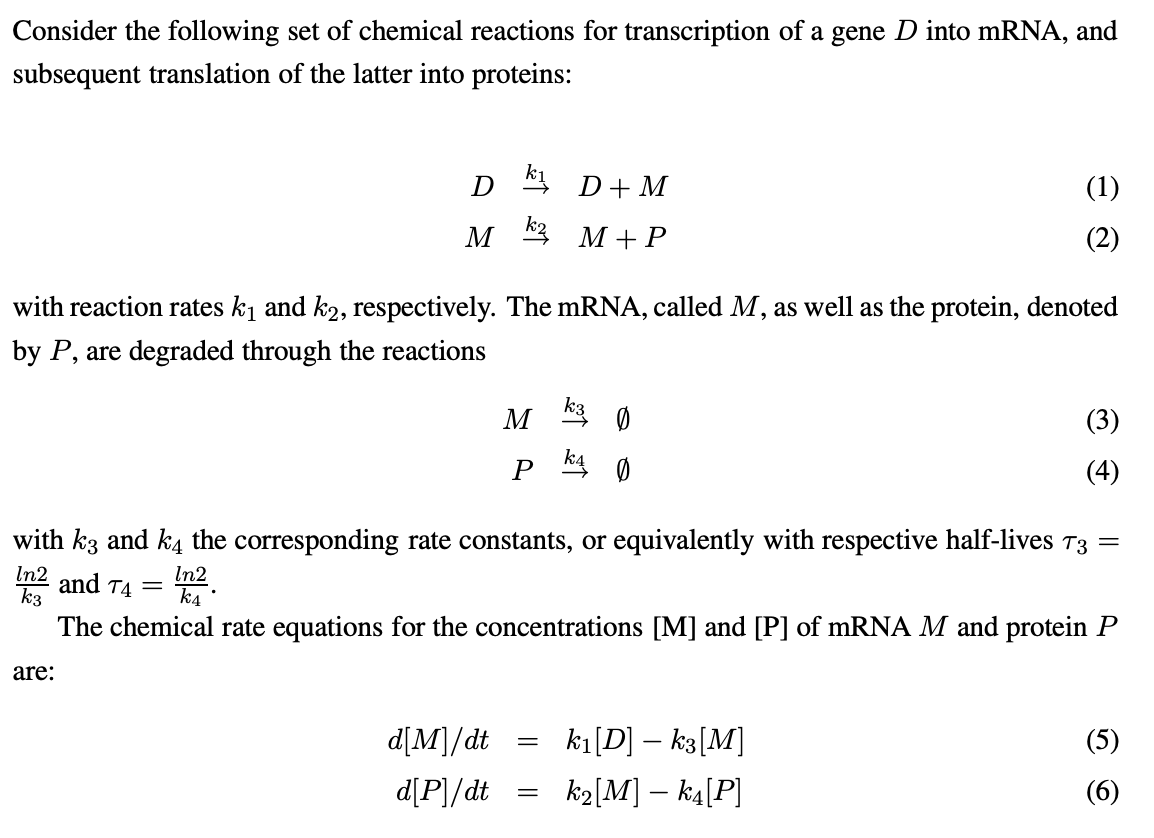
%pylab inline
from pyndamics3 import Simulation
from pyndamics3.chem import ChemSimulation
b=20
k3=0.00577
k4=0.0001925
k1=.01
sim=ChemSimulation(
"""
D --k1--> D+M
M --k2--> M+P
M --k3--> ϕ
P --k4--> ϕ
""",D=1,M=0,ϕ=0,P=0,k1=k1,k2=b*k3,k3=k3,k4=k4)
for c in sim.components:
c.plot=True
sim.run(4e4)
Output:
['D'] k1 ['D', 'M']
['M'] k2 ['M', 'P']
['M'] k3 ['ϕ']
['P'] k4 ['ϕ']
Components ['D', 'M', 'P', 'ϕ']
Parameters ['k1', 'k2', 'k3', 'k4']
diffeqs ["D' = 0", "M' = +k1*D -k3*M", "P' = +k2*M -k4*P"]
which yields figures like:
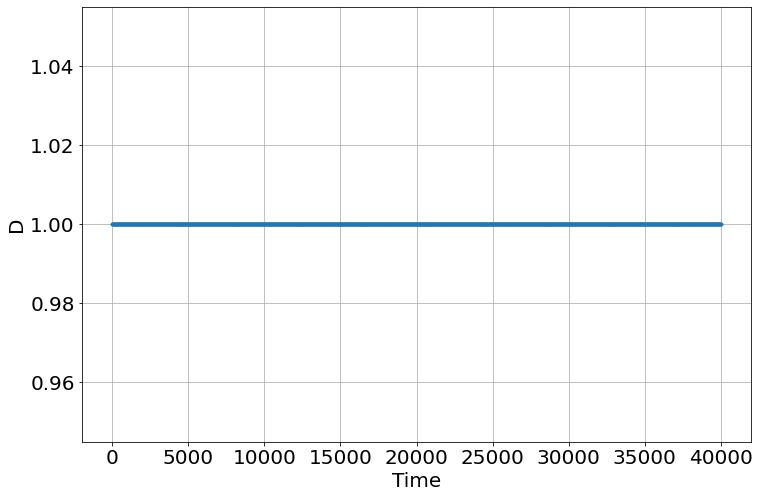
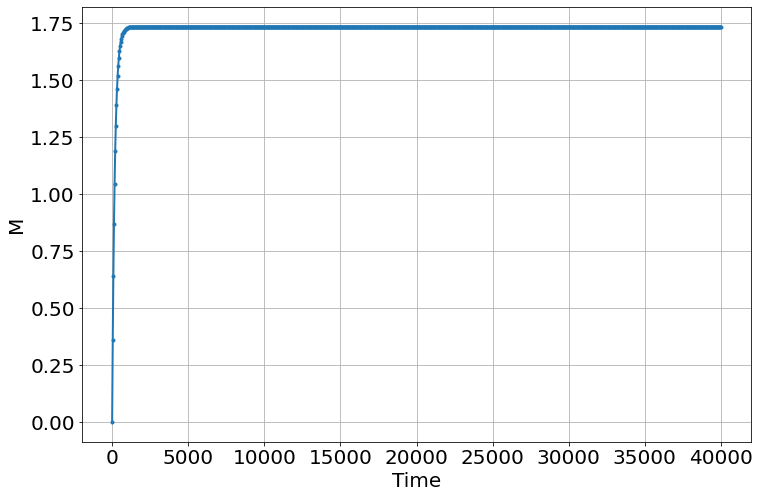

The text points out,

which we can find by looking at the end of the array for each of those variables.
sim.P[-1],sim.M[-1]
(1038.4743123361338, 1.7331022510164473)
The paper then adds the exercise

b=2
k3=0.00577
k4=0.0001925
k1=.01
sim=ChemSimulation(
"""
D --k1--> D+M
M --k2--> M+P
M --k3--> ϕ
P --k4--> ϕ
""",D=1,M=0,ϕ=0,P=0,k1=k1,k2=b*k3,k3=k3,k4=k4)
for c in sim.components:
c.plot=True
I discovered that by originally doing
sim.run(1e4)
sim.P[-1],sim.M[-1]
(88.21709421325941, 1.7331022259104094)
it didn't match the fixed point stated in the text! So Iooked at the plot
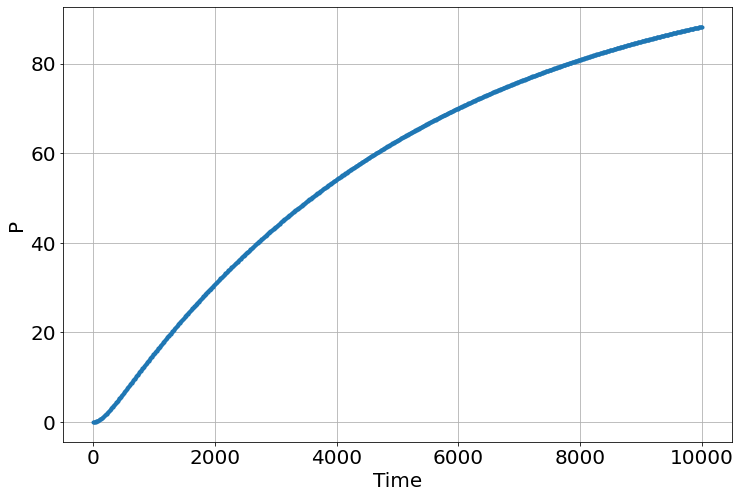
and saw it hadn't converged. Increasing the run time
sim.run(1e5)
sim.P[-1],sim.M[-1]
(103.8961031134814, 1.7331022530369293)
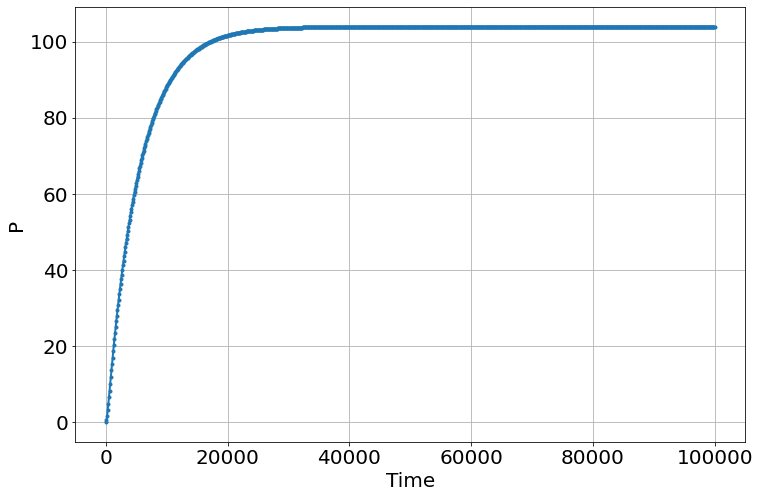
It converged and we got the same answer as in the text.
Another time I will extend this to the stochastic version, which is in the second part of the text.